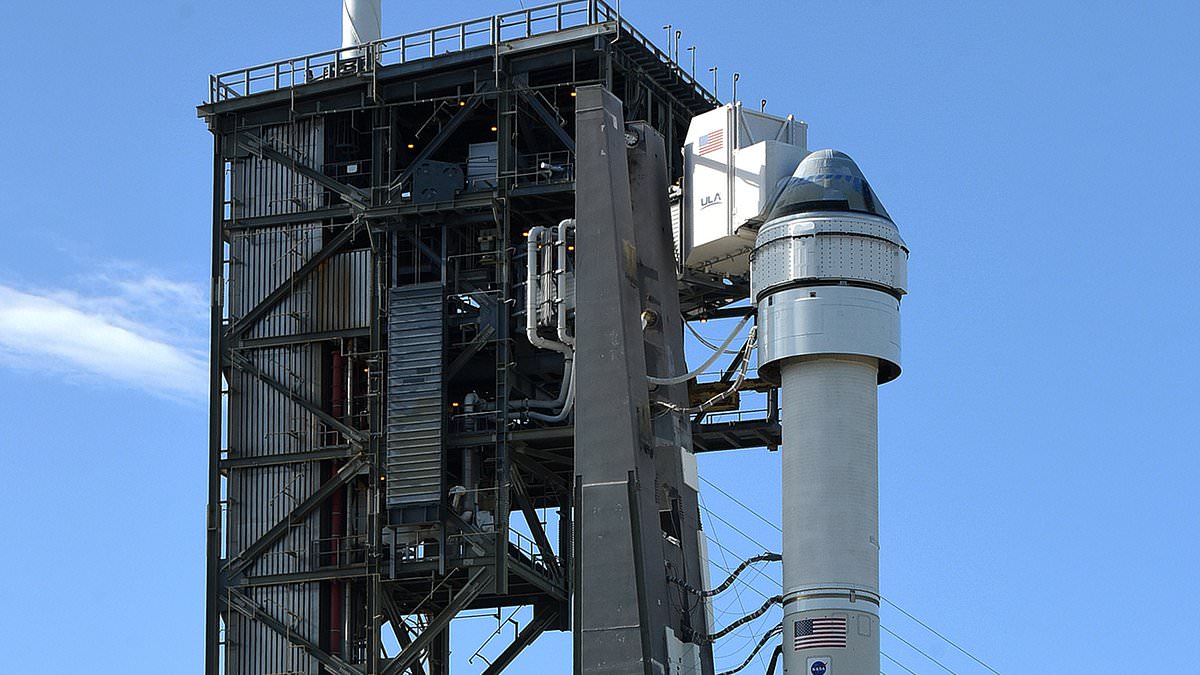Boeing’s first crewed flight was pushed back to June after a small leak was repaired
- Boeing aims to launch its first astronaut mission with the Starliner in early June
- Before the May launch, a small helium leak was discovered in the propulsion system
- The spacecraft lands safely with two test pilots on board the International Space Station
Boeing is now aiming for its first launch of astronauts in early June after dealing with additional problems on the space capsule for the past few weeks.
Company and NASA officials said intensive reviews indicate the Starliner capsule can safely fly two test pilots to the International Space Station, despite a propulsion system leak.
A small helium leak was discovered after the first launch attempt on May 6, which was thwarted by an unrelated rocket problem that has now been fixed.
Engineers suspect a faulty rubber seal the size of a shirt button and say that even if the leak worsened, it could be managed in flight.
All other capsule seals have been checked, NASA Commercial Crew Program Manager Steve Stich said, prompting managers to aim for a June 1 launch.
This will be the third test flight for the Starliner. Demos in 2019 and 2022 had no one on board.
Boeing had to repeat the empty flight due to software and other errors the first time.
If not for a faulty Atlas V rocket valve that halted the first countdown, Stich said the Starliner would have lifted off from Cape Canaveral earlier this month with the leak first detected in orbit.
Flight controllers would have handled the escape and the astronauts would have been safe, officials stressed.
Helium is used to pressurize the fuel lines of the propulsion system that maneuvers the capsule in flight.
Engineers now know the location of the leak and “that will help us improve the system in the future,” said Boeing program manager Mark Nappi.
“Remember, this is a test flight. We are still learning,” Nappi told reporters.
Identifying the leak from the Starliner led to the discovery of yet another problem — a “design vulnerability” in the propulsion system in the unlikely event of a series of failures, Stich said.
The team has developed workaround methods to get the capsule safely out of orbit at the end of the flight if such problems arise, he added.
“We’re not going to fly until we’re sure we’re safe,” NASA Associate Administrator Jim Free said.
Boeing’s Starliner capsule has been several years behind schedule in carrying astronauts to the International Space Station for NASA.
SpaceX is launching crews starting in 2020. NASA wants the two taxi companies to be able to support each other.














Post Comment